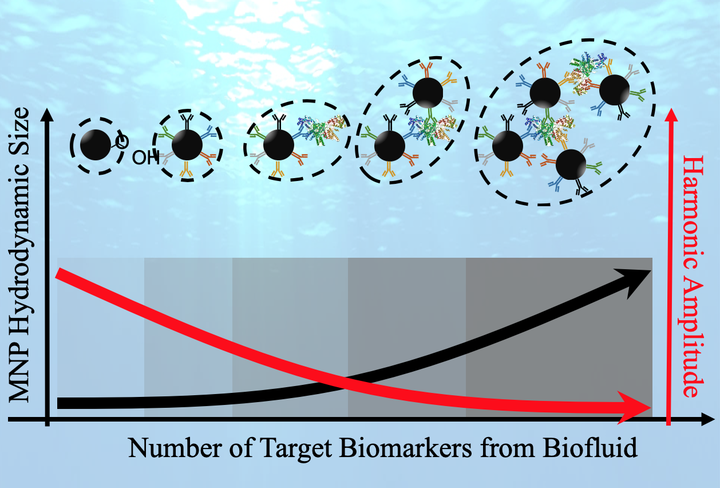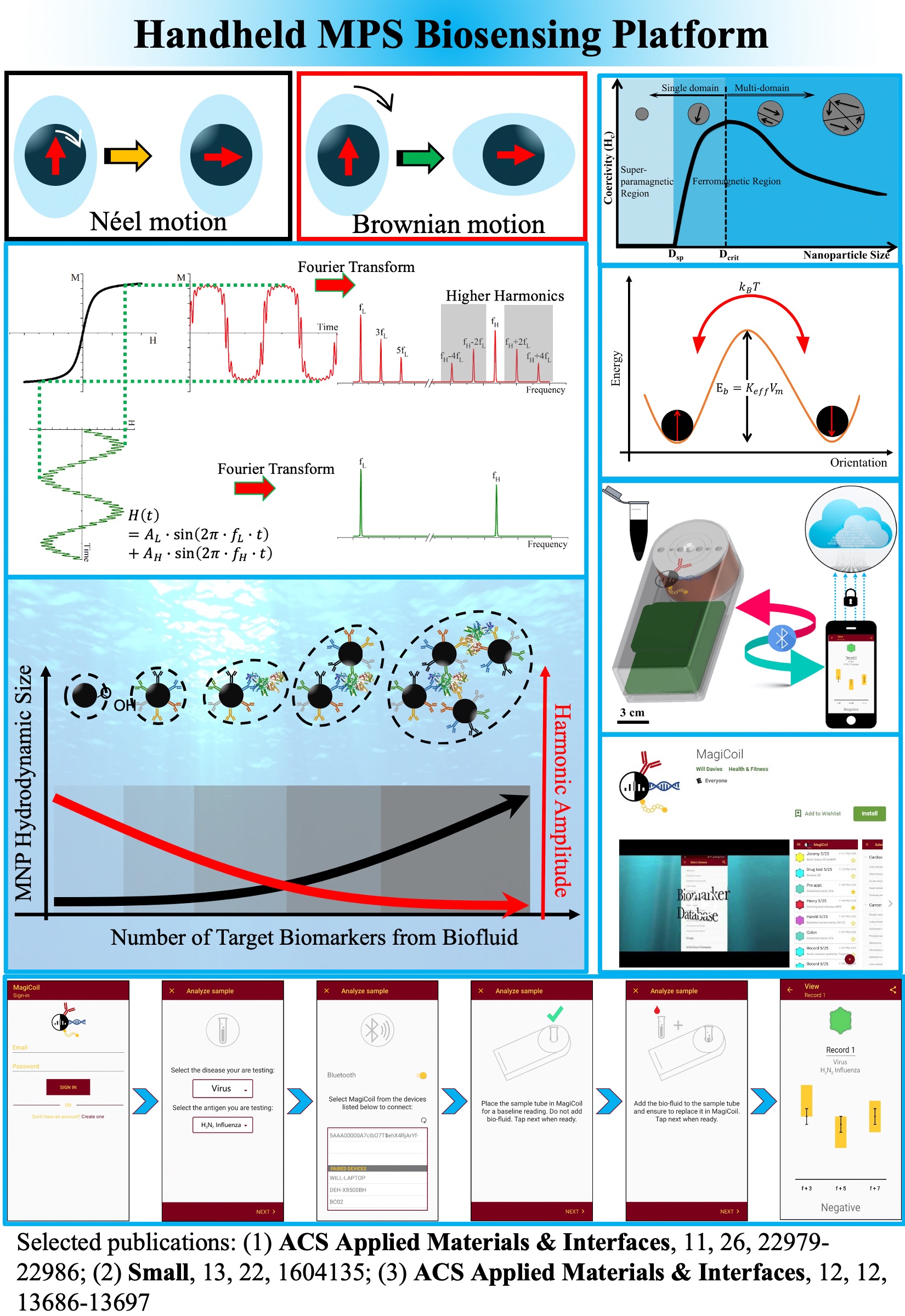Magnetic Particle Spectroscopy-based Bioassay: Theory
- When applying AC magnetic fields to magnetic nanoparticles (MNPs), their magnetic responses can be monitored by a pair of pick-up coils, in the format of harmonics.
- We conjugate specific antibodies onto MNP surface. In the presence of target biomarkers, MNPs link to biomarkers through specific antibody-antigen interactions. This specific recognition process allows us to detect specific biomarkers from biofluid samples.
- The magnetic responses of MNPs linked to target biomarkers become weaker. Converting the concentration of biomarkers into magnetic signals and electrical signals from pick-up coils.
Magnetic Particle Spectroscopy-based Bioassay: Influenza A Virus H1N1
- In our ACS AMI paper, we have successfully demonstrated the feasibility of using a MPS system combined with the self-assembly of MNPs for rapid, sensitive, and wash-free detection of H1N1 virus.
- The H1N1 nucleoprotein molecule has multiple epitopes that serve as binding sites for IgG polyclonal antibodies. Thus, each H1N1 nucleoprotein may be bound to more than one MNP, consequently assembling into clusters. In addition, each MNP functionalized with IgG antibodies specific to multiple epitopes of the H1N1 nucleoprotein enabling the particle to bind to multiple H1N1 nucleoprotein molecules. As a result, the cross-linking of MNPs and H1N1 nucleoproteins leads to different degrees of MNP self-assemblies depending on the number/concentration of H1N1 nucleoprotein molecules in the MNP ferrofluid.
- Noticeable changes in the macroscopic magnetic responses of MNPs are detected by the MPS system when these ferrofluid samples are subjected to external oscillating magnetic fields. Herein, we have reported the 3rd harmonic, the 5th harmonic, and the harmonic ratio R35 as metrics for the detection of H1N1 nucleoprotein.


